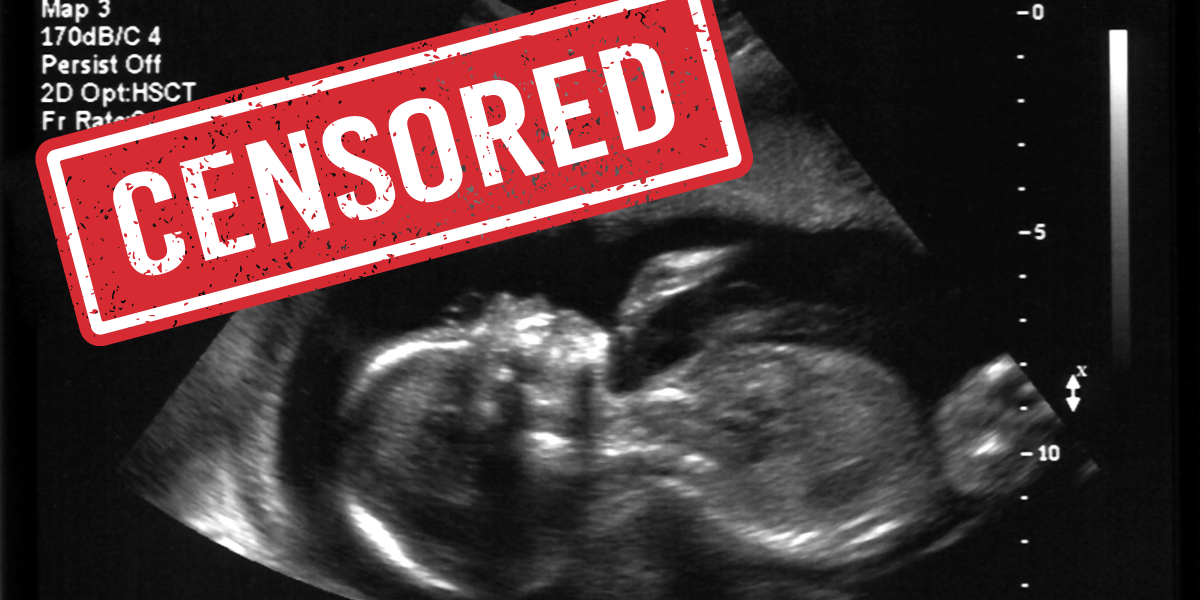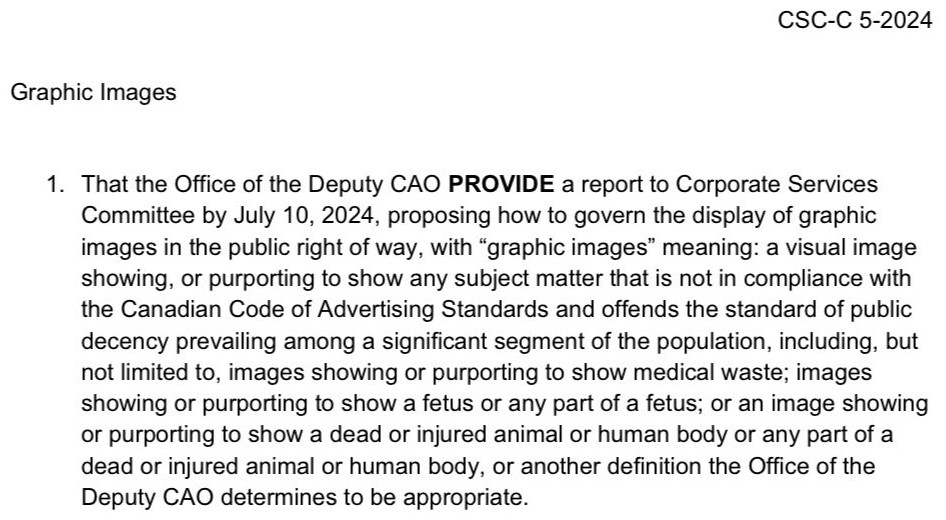Niagara Regional Council did WHAT??
Niagara Regional Council’s Corporate Services Committee has passed one of the most ridiculous motions I’ve ever seen! This motion could result in a by-law that bans images of meat, wheelchair-users, and even the crucifix from public!
That sounds crazy, I know…
So first, some background:
Over the past few years, a censorship blitz has ripped through many municipalities.
City after city is moving to regulate the delivery of postcards containing so-called “graphic” imagery, which, when you read the by-laws, you realize is just any fetal imagery, even benign ultrasound photos.

Trying to respond to each attack on freedom of expression is like playing Whac-A-Mole, and yet the pro-life movement has been valiantly arguing again and again that these municipal politicians are engaged in viewpoint discrimination, and that their actions are unconstitutional.
For this reason, even if their primary motivation is to stop pro-life activists from holding signs with abortion victim photography, Niagara Regional Council may be trying to avoid any accusations of bias. When the region’s Corporate Services Committee put forward a motion to look into governing the public display of “graphic images,” they decided to provide a very broad definition of “graphic images.”
Here’s a copy of the motion:

As you can see, they explicitly list “images showing or purporting to show medical waste; images showing or purporting to show a fetus or any part of a fetus; or an image showing or purporting to show a dead or injured animal or human body or any part of a dead or injured animal or human body…”
They’ve obviously messed up here.
Not only could ultrasound photos or scientific illustrations of fetal development be barred from the public eye, but a lot of other images too.
What about putting up a ‘Missing’ poster for one’s three-legged dog? That’s technically an injured animal.
What about grocery store advertisements for a rotisserie chicken? That’s technically a dead animal.
What about pictures of people with disabilities, whose bodies have been injured?
What about the crucifix, the most famous image of a dead human body? Can that no longer be shared in public?

I’m sure the councillors did not intend to be so far-reaching, but these are the implications of the motion they passed! It’s their own poor wording!
Please sign our petition today demanding that they apologize and drop any attempts to censor those in the Niagara region who are simply exercising their constitutional rights to freedom of expression.
Please also select the postcard option so that Campaign Life Coalition can send a postcard to Niagara Regional Council on your behalf.
The report from Niagara Region’s Office of the Deputy Chief Administrative Officer (CAO) is due back on July 10, so we want to make sure that before then, the 15 councillors on the committee hear from as many residents as possible that censorship is unacceptable.
Like me, you might be wondering how such a ludicrous motion ever got passed in the first place.
The theory I’ll posit is that when despots get drunk on power, their brains fall out. That’s the slippery slope of authoritarianism. They’ll shoot first and ask questions later. Give an inch, and they’ll take a mile.
See, maybe you think it would be okay if the councillors only banned genuinely graphic images from public. Maybe the by-law they draft will be more limited in scope than the motion was.
Leaving aside the problem of who determines what’s “graphic” and what’s not, graphic images actually serve a very important role in society.
Social reformers have used them for centuries to expose and end human rights injustices like slavery and child labour.
And unsurprisingly, the perpetrators do everything they can to cover up and hide the injustice.
Nobody likes to look at graphic images—which is exactly why they’re used. Our discomfort is informative and tells us something about the nature of what we’re looking at.
For instance, pro-choicers can say a fetus is “just a clump of cells,” but their anger and perturbation over abortion victim photography says otherwise.
And even if you’re not convinced about the effectiveness and prudence of using graphic imagery in activism, I hope you’ll at least recognize that trying to legally restrict it is disastrous.
It’s also important to remember that protection for freedom of expression is meaningless and unnecessary if it only covers expression on trivial and uncontroversial topics.
So, once again, please sign AND SHARE our petition with everyone you know in Niagara. Even if they aren’t pro-life, everyone should still recognize the necessity of freedom of expression for democracy.
Please also click “Yes” to the postcard option and take the next step by respectfully contacting your councillor/mayor to express your dismay. You can find the list of committee members here.
If your freedom of expression is valuable to you, then heed the wisdom of “Use it or lose it.”


